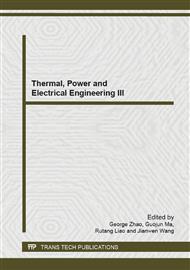p.134
p.138
p.143
p.148
p.152
p.157
p.161
p.165
p.170
Corrosion Resistance of CrSiN Coatings by Cathodic Arc Deposition with Different Arc Currents
Abstract:
Bipolar plate with multiple functions is one of the essential components of the PEMFC (Proton Exchange Membrane Fuel Cells) stacks. Recently, metallic bipolar plates, particularly different grades of stainless steels, have been increasingly considered due to relatively low cost, good corrosion resistance, sufficient stiffness and excellent flexibility in thin forms, and easy manufacturability [1-3]. However, the major concerns with the use of stainless steel alloys as bipolar plates are their corrosion resistance and interfacial electrical resistance under long operation conditions. Development of advanced ternary nitride coatings such as chromium silicon nitride (CrSiN) has attracted significant industrial interest in recent years [4-11]. Si addition of CrN to form CrSiN films were prepared by cathode arc ion deposition technique and magnetron sputter technique, in order to improve the characterizations of the coatings from structure to corrosion behaviors. It is reported that with the additional element of Si, the hardness and corrosion resistance of the CrSiN coatings can be greatly improved compared to that of the CrN coating. A direct link between the microstructure and mechanical properties of CrSiN coatings with varying Si contents was established [8]. With increasing Si content, the structure of CrSiN coating exhibited the transformation from a columnar-grained structure to a nanocomposite structure, consisting of CrN nanocrystallites embedded in an amorphous matrix. A maximum hardness of 26.6 GPa was found for CrSiN coating with Si content of about 6.7 at.%, while that of pure CrN was 19.4 GPa [6]. Up to now, the CrSiN is yet thoroughly investigated.
Info:
Periodical:
Pages:
152-156
Citation:
Online since:
June 2014
Authors:
Price:
Сopyright:
© 2014 Trans Tech Publications Ltd. All Rights Reserved
Share:
Citation:


